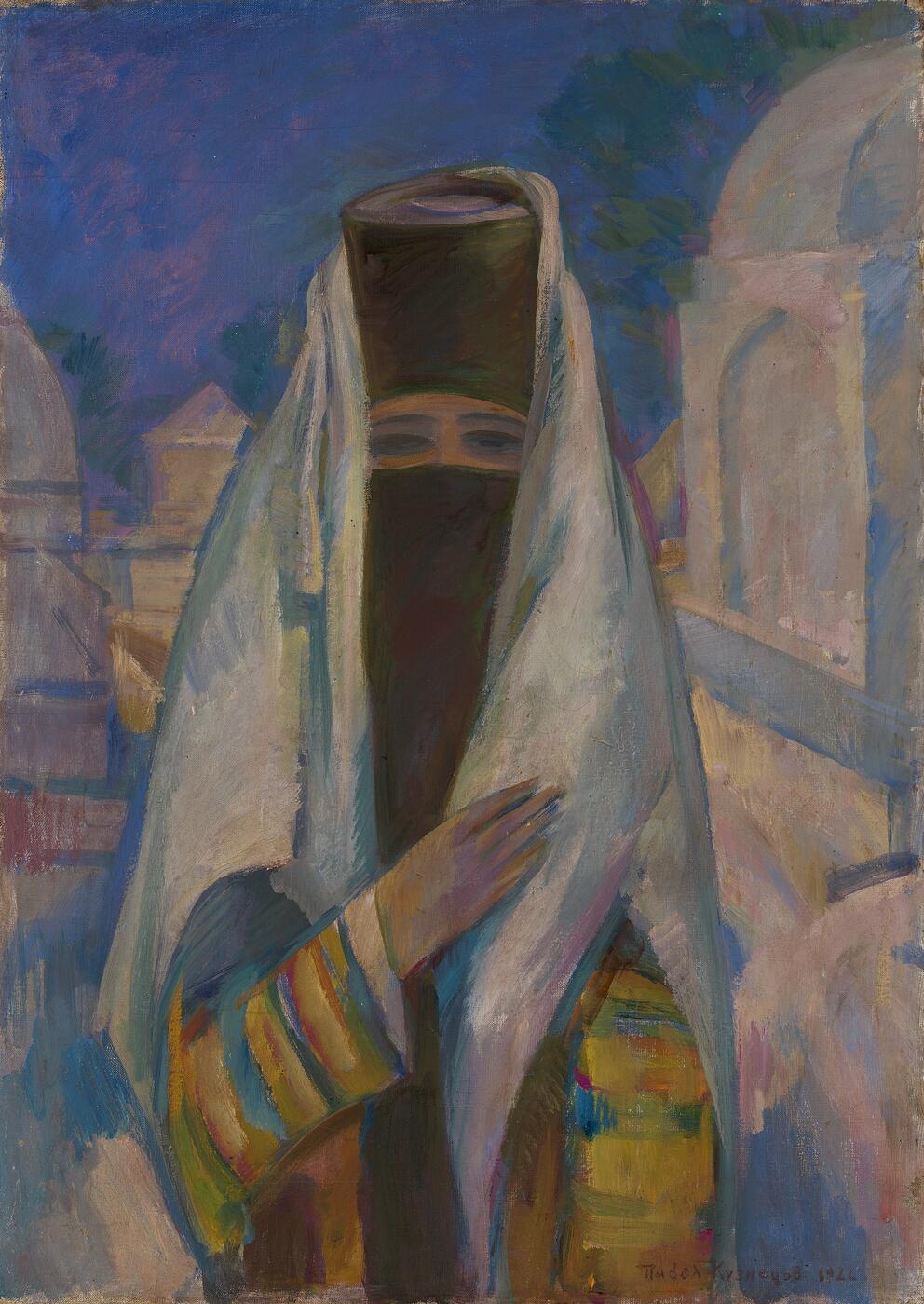MacDougall's Russian Art Auctions 8-9 June 2011
8 June 2011

* 40. KUZNETSOV, PAVEL (1878-1968)
Oriental Beauty, signed and dated 1922.
Oil on canvas, 84 by 60 cm.
80,000-120,000 GBP
Authenticity of the work has been confirmed by the expert I. Geraschenko.
The effective and distinctive work Oriental Beauty belongs to Pavel Kuznetsov's cycle of pictures on themes of the steppe and Central Asia - a series that brought him great renown and marked the high point of his career. Painted at the peak of his talent, it is a free interpretation of the composition of his well-known 1920 picture Kyrgyz Woman, which is in the Tretyakov Gallery. We believe that the work was painted later than the artist's dating indicates.
Kuznetsov first visited the Trans-Volga steppes before the First World War. After several years of travelling, his wanderings finally brought him to Samarkand and Bukhara. He brought back from these places enough impressions to last for years. Right up to the early 1920s he was painting on themes of the steppe and Bukhara and in 1923, as if taking stock of it all, he produced the series of lithographs Mountainous Bukhara.
The picture of the Kyrgyz Woman (or Uzbek Woman) was one of these universalised, phantom memories. Kuznetsov was not seeking ethnographic accuracy when he created his portrait of an oriental woman whose eyes, dark against the sliver of her face glimpsed behind her black yashmak, betray an inner fire, depth and the passion of human nature. He was thinking of the Orient in general, of its soul, of the indestructability of those eternal principles of life as were seen in the East and had disappeared from the West.
Having broken away from Symbolism, though not entirely severing this bond, Kuznetsov transformed and universalised real life right up to the moment he transferred it to his canvas, endeavouring to embody his ideal of the natural laws of existence in formulations of plastic perfection, compositional and colour harmony, in the iconographic canons he himself had established.
Returning to that same composition forty years later, the artist
changed the proportions of the figure and made the face larger and closer. The minimalist blue background is formed of elements of Bukhara architecture - vertical and horizontal planes with an arbitrary system of perspective. But Kuznetsov, as previously, builds his composition functionally, retaining a strict, if also dynamic, symmetry, based on the frequent repetition of basic colour combinations. Blue, yellow, pink, pale green, slightly textured, overlapping brushstrokes across the whole surface of the picture create an effect of space and sunlight.
The homogeneity of colour between the female figure and the architecture, her garments and the sky, and generally all elements of the painting, evokes the universal colour harmony of the world. This harmony in Kuznetsov's picture is achieved in a pure form and thus relates not so much to the concrete manifestation of life - the woman's face, which at some time had appeared before the artist's gaze - as to the world in general. For on the compositional basis of the 1920s picture new impressions were laid down, the venerable artist's experiences in life and art, creating a plastic and painterly intensivity, a concentration of feeling while retaining that rare, free breath of life that always marked Kuznetsov's best works.
Notes on symbols:
* Indicates 5% Import Duty Charge applies.
Ω Indicates 20% Import Duty Charge applies.
§ Indicates Artist's Resale Right applies.
† Indicates Standard VAT scheme applies, and the rate of 20% VAT will be charged on both hammer price and premium.